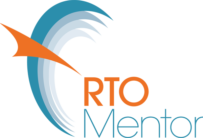The NSSC seeks feedback on this consultation paper from all interested stakeholders. The more responses they get the better.
Responses must be submitted by Friday 13 July 2012.Value your opinion and provide them with information.
More information can be found http://www.nssc.natese.gov.au/standards_review?goback=%2Egmr_3674687%2Egde_3674687_member_123541132%2Egmr_3674687%2Egde_3674687_member_122877621#consultation_paper
The NSSC welcomes submissions that respond to the paper more generally or address the following questions:
Q1. Overall, what is the scope of change required to meet the changing needs of the sector and preserve the reputation of the sector? Is it minimal, significant but within the key areas of the standards, or significant reform?
Q2. Do the national standards (or their regulation) require an increased focus on assuring nationally consistent, high quality training and assessment services?
Q3. How can the standards ensure national consistency in qualification outcomes that are recognised by industry?
Q4. What is the role of external validation or independent moderation of assessment outcomes in the standards?
Q5. What other mechanisms might be used, other than external validation of assessment, to improve consistency in outcomes?
Q6. Should ‘outcomes focused’ remain a key feature of the standards?
Q7. How user friendly are the standards in terms of interpretation and implementation and where and how could they be improved?
Q8. How could the standards framework be improved to make them more streamlined?
Q9. Is the purpose of the national standards for the regulation of VET most directly concerned with RTOs, or with the training and assessment services they provide, or with the outcomes that they achieve?
Q10. How should the purpose of the national standards be expressed?
Q11. What are the key characteristics of an effective regulatory model for the VET standards?
Q12. Is there a place for self-assessment and/or self-regulation in VET and what role would the regulator, as the responsible registrar, have in such an arrangement?
Q13. How can the standards support the availability of easily accessible, appropriate and high quality information that gives learners and employers greater confidence that the choices they make are the rights ones for them?
Q14. How can the standards support the achievement of current national goals and policy objectives?
Q15. What, if any, is the appropriate level of student protection that the standards should provide in addition to the protection provided by consumer protection law?
Q16. How can the standards support industry being appropriately engaged to ensure high quality outcomes are achieved?
